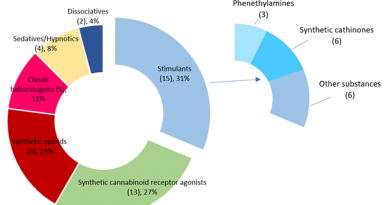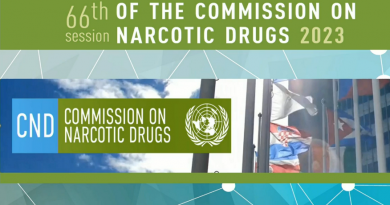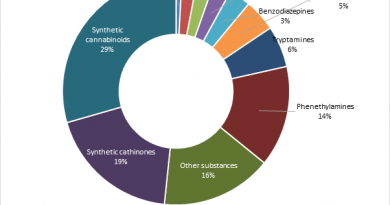UNODC EWA: ´Tablet K´: Afghanistan´s emerging synthetic drug market
VIENNA, Austria – January 2022: An illicit market for synthetic drug tablets has developed in Afghanistan, complementing the clandestine manufacture of methamphetamine. The current issue of the Global SMART Update Vol. 26 “Afghanistan´s ´tablet K´- a forensic insight into an emerging synthetic drug market” is based on forensic analysis of over 500 samples in tablet form and sheds light on a drug product sold under the street name of ‘tablet K’ in Afghanistan.
Three different types of ‘tablet K’ were identified based on their content: a methamphetamine type, a type containing methamphetamine as well as opioids and a type containing mainly MDMA. Physically, the tablets resemble “ecstasy” tablets in terms of appearance. The identification of opioids in addition to methamphetamine in almost a third of all ‘tablet K’ samples analysed was unexpected and could point to the intentional production of a tablet with both stimulant and opioid effects, catering for users who seek a drug product with that combination.
Law enforcement, border control and customs officers as well as forensic laboratories in Afghanistan and neighbouring countries need to be aware that “ecstasy”-type tablets in the wider region might not necessarily contain any MDMA but a range of controlled substances, including methamphetamine, heroin and tramadol. Field testing of such complex mixtures might lead to a higher proportion of inconclusive results, even if a combination of methods is used. It is recommended to send samples with inconclusive results to the laboratory for further analysis. Forensic laboratories in the region might want to consider screening samples of “ecstasy”-type tablets for both amphetamine-type stimulants and opioids and use an appropriate combination of methods based on the screening results (see UNODC manuals listed below).
To find out more about the emerging illicit synthetic drug market in Afghanistan, please check out the latest Global SMART Update here.
Figure 1: Comparison of substances found in ‘tablet K’ samples with “La casa de papel” logo analyzed in Afghanistan (Sep 2020 – Mar 2021)
Source: Islamic Republic of Afghanistan, Counter Narcotics Police of Afghanistan (CNPA) laboratory, 2021.
Note: “La casa de papel” or “Money Heist” is the title of a Netflix programme. Case A sample reported in September 2020, similar tablet in terms of colour and logo and content reported in February 2021 together with Case B and C samples. Note the misspelling of ‘PAPEL’ as ‘PAREL’ on the tablets which do not contain MDMA.
Figure 2: Types of ‘tablet K’ samples analyzed in Afghanistan (Sep 2020 − Mar 2021)
Source: Islamic Republic of Afghanistan, Counter Narcotics Police of Afghanistan (CNPA) laboratory, 2021.
For more information please see:
UNODC, Drug Situation in Afghanistan 2021 – Latest findings and emerging threats (November 2021).
UNODC, Global Synthetic Drugs Assessment 2020 (United Nations publication, Sales No. E.20.XI.9).
UNODC, Rapid Testing Methods of Drugs of Abuse (United Nations publication, Sales No. E.08.XI.14).
UNODC, Recommended Methods for Testing Opium, Morphine and Heroin (June 1998).




